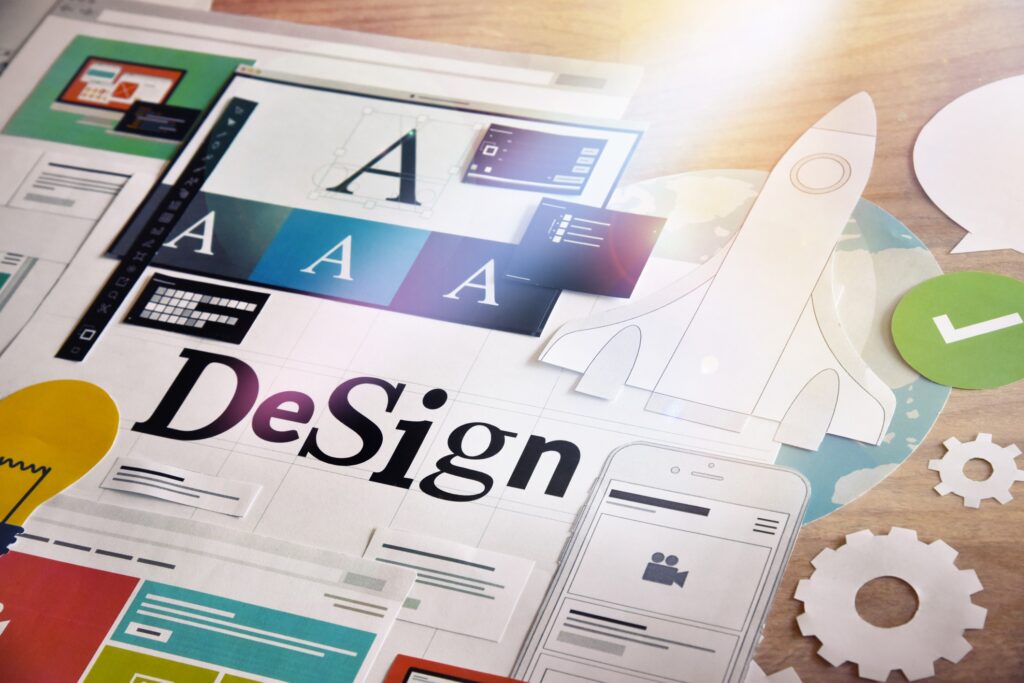
Can you believe it’s been over 5 years since Google introduced Material Design? It’s incredible how it has become such an iconic look for their websites and app-based services.
But the best part is that Material Design isn’t just limited to Google’s platforms anymore. The wider design community has embraced it and can be found on websites and apps everywhere, even on competing platforms.
For example, Simplenote incorporated a Material Design aesthetic into their apps for both desktop and mobile platforms. This makes it evident that it is a fantastic choice for various design implementations.
So, let’s dive into why Material Design is still relevant in web design trends and how it continues to shape the digital world.
What Is Material Design?
Back in 2014, Google released Material Design. It was like a breath of fresh air, breaking away from the flat design trend that everyone was used to. Inspired by the card-based layout of Google Now, Material Design added a touch of nostalgia by bringing paper-based design styles into the digital realm.
So, why is Material Design so important? Just like how Apple adopted flat design principles as their standard, Google wanted to ensure a consistent user experience across all their products, no matter how users accessed them.
That’s where Material Design swoops in to save the day! It’s a design system that unifies the user experience across devices, platforms, and interaction methods. It’s like having a trusty sidekick that guides designers to create cohesive and intentional designs.
But Material Design isn’t just about appearances. It goes beyond that. It provides typography, grids, space, scale, color, and imagery guidelines. Despite the nature and extensive documentation of Material Design, it’s important to note that it remains a remarkably flexible design library. While the guidelines provide a solid foundation, many of the specific implementation details are left entirely up to the designer’s discretion and creativity.
Material Design encourages designers to create designs that have hierarchy, meaning, and focus.
Why is Material Design still relevant in web design?
Here are reasons why material design is still relevant:
More than just guidelines
Material Design is not your ordinary set of design guidelines. It’s an entire ecosystem packed with predefined solutions for various design situations. Imagine having a treasure trove of use cases designers can easily refer to.
For example, let’s say you’re designing a navigation menu for a website. Material Design provides clear guidelines on structuring and styling it, ensuring a consistent and user-friendly experience.
Systematic documentation
Just like other Google products, Material Design comes with the Google “advantage.” That means detailed documentation is readily available to help designers understand, explore, and seamlessly incorporate the guidelines into their projects.
Intuitively captivating
Design is subjective, and opinions can vary greatly. However, Material Design layouts have been proven to be more intuitive for most users than the flatter design approaches of the past.
The thoughtful use of depth, shadows, and motion creates an engaging and familiar experience, making it easier for users to navigate the interface.
Flexibility
While Material Design offers predefined guidelines for every design scenario, it embraces flexibility. Designers can work with different design elements and choose how to implement them. It strikes the perfect balance between rules and creative freedom, allowing designers to infuse their unique style and flair into their creations.
For instance, you can play around with the color palette, typography, or spacing within the Material Design framework, giving your design a touch of originality while still maintaining a cohesive look and feel.
Mobile apps’ best friend
Material Design was originally developed for designing Android applications, making it an ideal design system for mobile apps. As the number of smartphone users continues to skyrocket, the popularity of Material Design among UI designers worldwide is on the rise.
With Material Design, you can create sleek and user-friendly mobile app interfaces. It ensures consistency across different devices and platforms, enhancing the user experience.
All in All
Overall, Material Design continues to hold its relevance in the world of best web design, and it’s not just limited to Android apps. If you’re developing an app primarily for Android, choosing Material Design is a no-brainer. Thanks to Google’s wide adoption, your app will blend in and feel like a native experience.
But the exciting part is that material design isn’t limited to the Android platform alone. There are other use cases where it shines brightly. As this design system evolves and matures, we can expect even more opportunities to leverage its power. So what are you waiting for? It’s time to implement this design.
WordPress Development | WordPress Theme Development | PSD To WordPress

